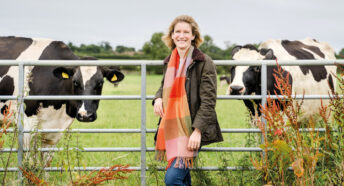In praise of the night
Anita Sethi on her quest to learn more about the beauty of the skies above our heads.
I remember gazing up at the North Star for the first time with my naked eye and learning to identify this stunning light – one of the most profound moments of connection I have felt with the universe. I was at Battlesteads Observatory in Northumberland and seeing for myself how the north has some of the darkest skies in the country, wonderfully free of light pollution. Looking up into the starry sky, I felt all the stress I had been feeling seep away, and I felt part of something so much vaster than myself.
This moving experience set me off on a quest to explore the wonders of Dark Sky Reserves and nature at night-time – I’ve since had night walks beneath starlit skies in the North York Moors and the North Pennines, revelling in all the magic and surprising startles of light to be found in darkness. Walking alone, I’ve looked up into the inky sky and the stars made me feel not alone in this universe at all. I’ve felt awe and wonder, and also loved seeing starlight and moonlight illuminating the branches of trees and sheening the surface of dark rivers.

I believe that starry skies are one of the most magical sights the countryside can offer. I would recommend everyone enjoy the starry skies of England and do their best to protect them from light pollution. I am not the only one to have drawn inspiration from the night; indeed artists, musicians and poets have been celebrating them throughout the ages, from Keats’ ‘Ode to a Nightingale’ to Patti Smith’s ‘Because the Night’.
Nature after dark
Contrary to popular opinion, darkness and the night have their virtues for both human beings and the natural world. There is so much nature that comes alive at night-time, a whole world of nocturnal wildlife. However, light pollution is threatening the magical world of darkness. Light pollution not only limits our views of these skies, but also disrupts wildlife’s natural patterns – some birds have been known to wake up in the middle of the night and start singing, tricked into thinking it is morning by the electric glare. Starry skies are in shorter supply than they should be in modern Britain, and we should do all we can to conserve and protect them.

Looking back on my lifelong relationship with the night sky, it was the moon that mesmerised me the most. I remember looking to the moon in the murky skies over my hometown of Manchester, and always marvelling to see it.
Together at night
As well as enjoying many solitary night walks, I have also had collective experiences of enjoying the night sky. In addition to walking with friends, I’ve explored with organisations including Adventures for the Soul, with whom I went on a night walk up Sutton Bank in the North York Moors, spotting celestial wonders galore. We saw a magnificent full moon, and rarely have I felt so close to it as I did high up on that hill.
The organisation encourages walkers to walk mindfully and meditatively, being aware of the here and now – of every footstep as it crunches through the autumn leaves, of every breath as it begins to leave the mouth visibly as the temperature plummets.

I love walking alone through the dark and losing myself in it, but it is also illuminating to have some guides to the night, so I booked onto a Hidden Horizons night adventure.
I arrive to see an impressive array of telescopes set up, through which I observe Jupiter for the first time; or rather, I will have seen it before, yet not known how to identify it – looking out for its brightness, for it is the third brightest object in the night sky after the moon and Venus.
I peer through a telescope and see the moon magnified, its sheer coolness and grandness. I learn more of the language of the night sky; constellations and clusters and asterisms; how stars twinkle and planets don’t; how to find the North Star, Polaris.
Championing the stars
There are many wonderful groups and communities coming together to celebrate the night. An inspiring group initiative is CPRE’s annual Star Count, inviting members of the public to act as citizen scientists and report how starry the sky looks in their area. Star Count is a heartening example of collective action to champion starry night skies.

Looking up at the night sky and seeing the stars reminds us that we are all connected. In the turbulent times through which we are living, we need such a reminder more than ever. Pause for a minute, step outside, look up – and remember the stardust of which you are made.
Anita Sethi is a writer, journalist and broadcaster whose first book, I Belong Here: A Journey Along the Backbone of Britain (Bloomsbury), is out now.
This article, or a version of it, was originally published in CPRE’s award-winning magazine, Countryside Voices. You’ll have Countryside Voices sent to your door three times a year, as well as access to other benefits including discounts on attraction visits and countryside kit from major high street stores, when you join as a CPRE member. Join us now.









